Article written by Elisa - Travel Writer & Local in France
This article may contain compensated links. Please read disclaimer for more info.
Visit Giverny, Normandy
Giverny is an absolutely stunning village located on the Right Bank of the River Seine in Normandy. Giverny is popular among tourists because of a particularly famous former resident. Claude Monet, the famous Impressionist painter, spent the last years of his life in Giverny and painted some of his most popular works there.
Giverny makes for one of the most popular day trips from Paris because it’s just 80km from the famous city. It’s also just 71km from Rouen, making it one of the best places to visit in Northern France.
So, whether you want to soak in the atmosphere that once inspired Monet or just want to spend time in one of the most beautiful villages in Normandy, here’s a quick guide to Giverny, France. In this guide, you will find our top tips for visiting Monet’s Garden, as well as how to go, fun things to do in Giverny, and our favorite Giverny restaurants.
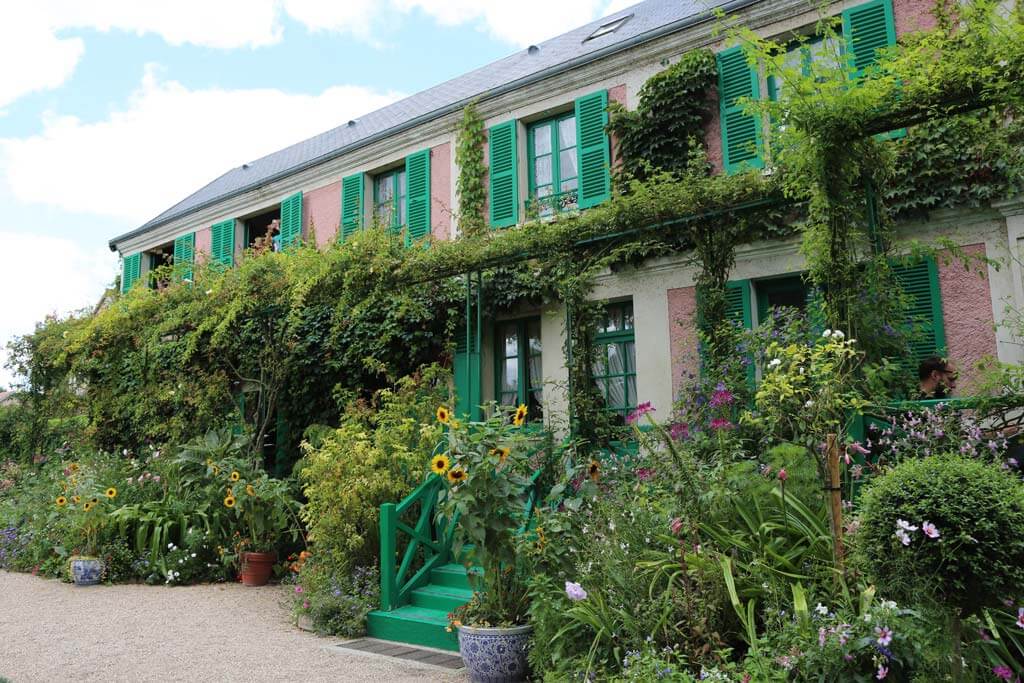
Best Time to Visit Monet’s Garden, Giverny
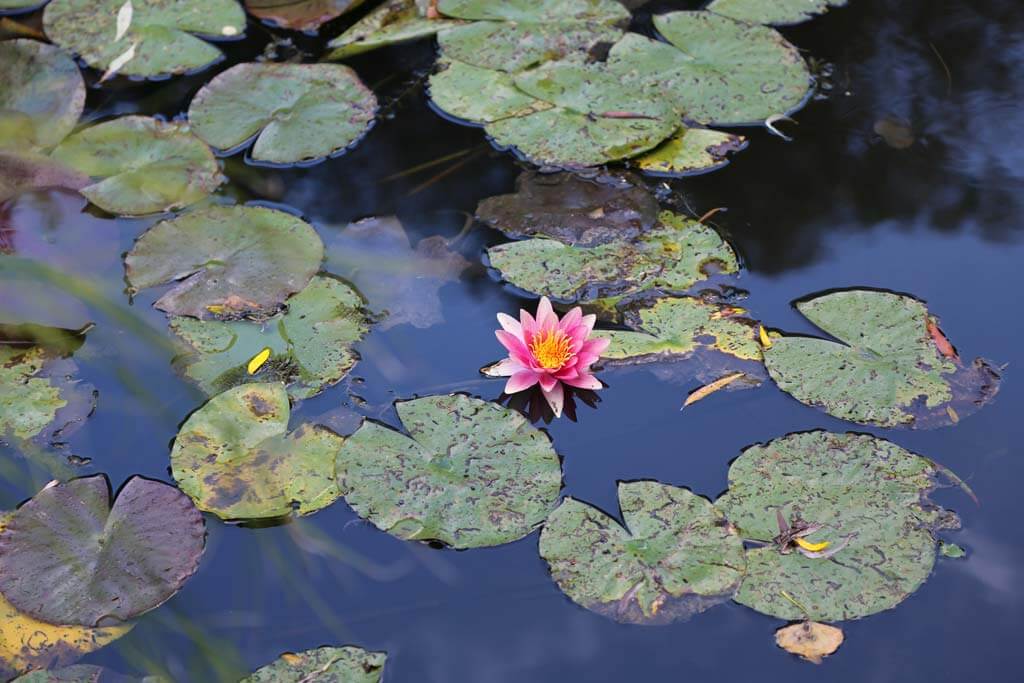
When is the best time to visit Monet’s Garden? Monet’s Garden at Giverny is open from the 1st of April to the 1st of November, and it’s closed in winter. The site is at its busiest in summer, and this is when you’ll enjoy long, warm days and amazing light for pictures. However, it also gets very crowded in summer.
The crowds will be smaller during shoulder season, but you may have to risk some unpleasant weather. The days will also be shorter, and you may have trouble getting the amazing garden pictures that you want.
Depending on when you go, you’ll see different sides of Monet’s Garden, so here’s what you can expect.
1. Monet’s Garden in Spring
In early spring, the flowers will start to bloom in Monet’s garden. The first flowers you’ll see will be violas, hyacinths, pansies, botanical narcissi in various colors, wallflowers, and fritillaria. Over time, daffodils, tulips, and narcissi will bloom in great profusion.
2. Monet’s Garden in the Summer
In the summer, this lovely garden explodes with warmer colors. The Japanese pond blooms with water lilies and flowers like carnations, cosmos, geraniums, impatiens, and snapdragons. In the summer, amaranths start to bloom too. You’ll also see dahlia and gladioli as well as 4-foot-tall sunflowers.
3. Monet’s Garden in Autumn
Monet’s Garden in autumn is a place of tranquility and seclusion. Nasturtiums are the king here, as well as purple dahlias against the softer light of autumn. The water lilies in the pond start to decline at this time, giving the garden a quieter appeal. The weeping willows take on the yellowish-orange of autumn, and flowers like dahlias, Savannah daisies, rudbeckias, and cupheas have their last explosion before their winter sleep.
How to Get to Giverny from Paris
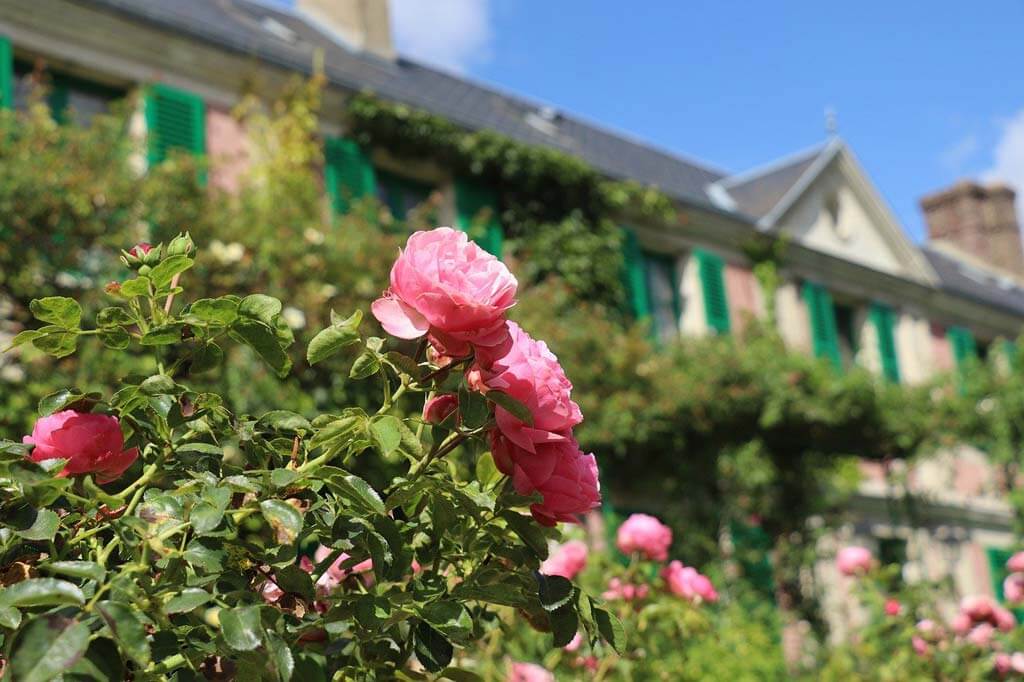
1. Paris to Giverny By car
Wondering how to get to Giverny from Paris? Because Giverny is only 80km away, you can travel from Paris to Giverny by car in about an hour and a half.
You could also stop at Giverny as part of a Normandy road trip from Paris to the coast. If you need a car, DiscoverCars.com is excellent because it reviews all the major rental companies, such as Hertz, Avis, etc., and more, and makes a price comparison for you. Click here for our best tips on renting a car in France.
2. Paris to Giverny By Public Transportation
You’ll need to take the train plus a bus to go from Paris to Giverny, France. You can catch the train from Paris Saint-Lazare train station to Vernon in Giverny. The train takes 51 minutes and leaves every 20 minutes.
From there, you catch bus #10 from the Vernon Gare SNCF station. The bus leaves every two hours and takes 5 minutes to get to Giverny la Musardière bus station. Then, it’s a 4-min walk to the Fondation Monet in Giverny – Click here to buy your train tickets to Vernon-Giverny
3. Paris to Giverny With a Guided Tour
You can also travel from Paris to Giverny Monet’s Garden with a guided tour. Explore the garden with an expert guide with this half-day Giverny day tour (small group) or get more active and try this Monet’s Garden bike tour with a picnic lunch on the banks of the River Seine.
How to Get to Giverny from Rouen
1. Rouen to Giverny by Car
The drive from Rouen to Giverny is only 70.5km, and it takes about 45 minutes. If you plan a long weekend in Rouen and have a car, you could consider a half-day trip to Giverny.
You could also stop at Giverny as part of a Normandy road trip. If you need a car, DiscoverCars.com is excellent because it reviews all the major rental companies, such as Hertz, Avis, etc., and more, and makes a price comparison for you.
2. Rouen to Giverny by Public Transportation
To go to Giverny from Rouen, you will need to take the train and the bus. You can catch the train from Rouen Rive Droite train station to Vernon in Giverny. The train takes 40 minutes and leaves hourly.
From there, you catch bus #10 from the Vernon Gare SNCF station. The bus leaves every two hours and takes 5 minutes to get to Giverny la Musardière bus station. Then, it is a 4-min walk to the Fondation Monet in Giverny – Click here to buy your train tickets from Rouen to Vernon-Giverny
What to See in Giverny – Monet’s Garden and House
1. Monet’s House and Studio
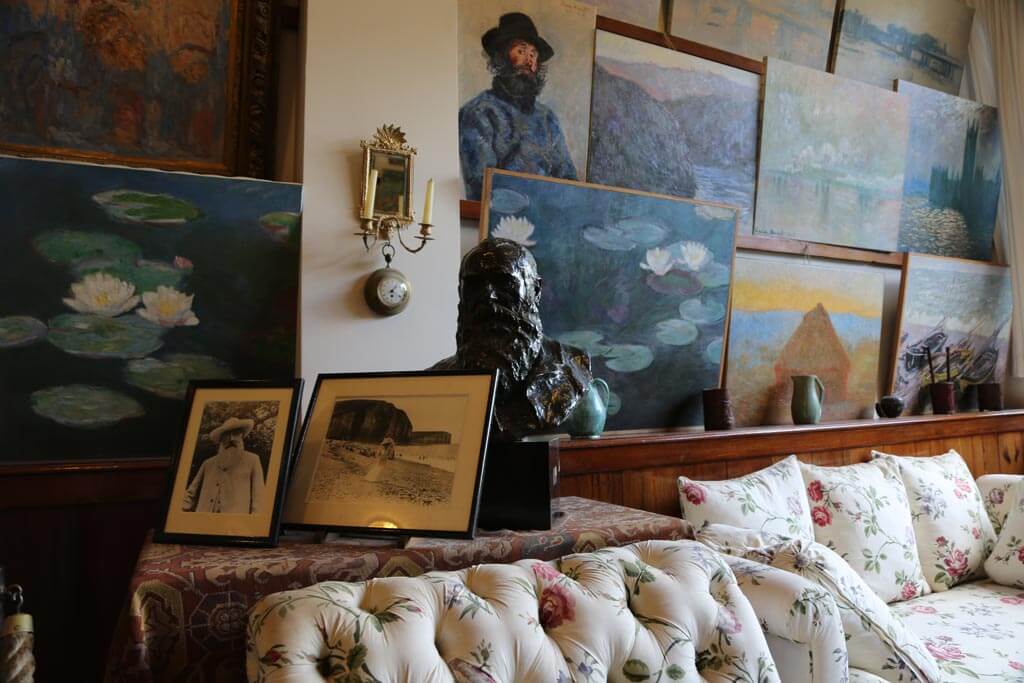
Claude Monet spent the last years of his life in Giverny, and you can get a glimpse into his final days in his house and studio. The site was preserved by a non-profit organization known as Fondation Monet, and it’s bright, cheery, and welcoming, with lots of colors.
The studio, in particular, is amazing, with reproductions of Monet’s work on the walls. The studio was frequently visited by clients and friends, so Monet spent many hours here entertaining. If you’ve ever wanted to learn more about Monet’s work, you can do so in his own space.
The Monet House is like one of the author’s paintings, full of light and colors, where nothing is left to chance. The rooms are on the first floor, while the ground floor is dedicated to the living spaces and kitchen – Click here to buy your tickets
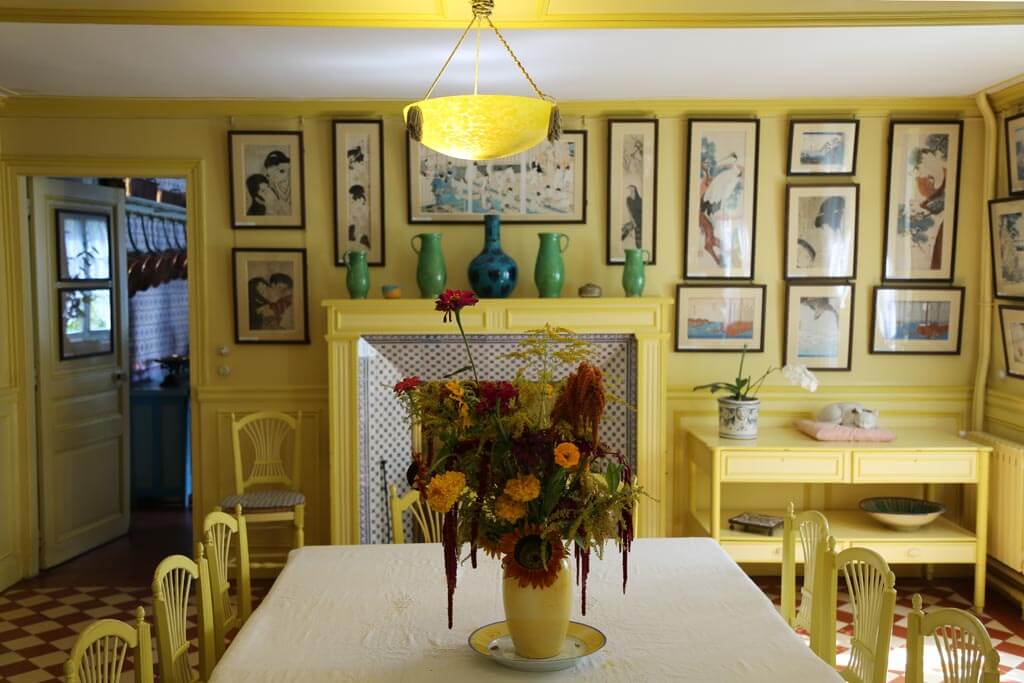
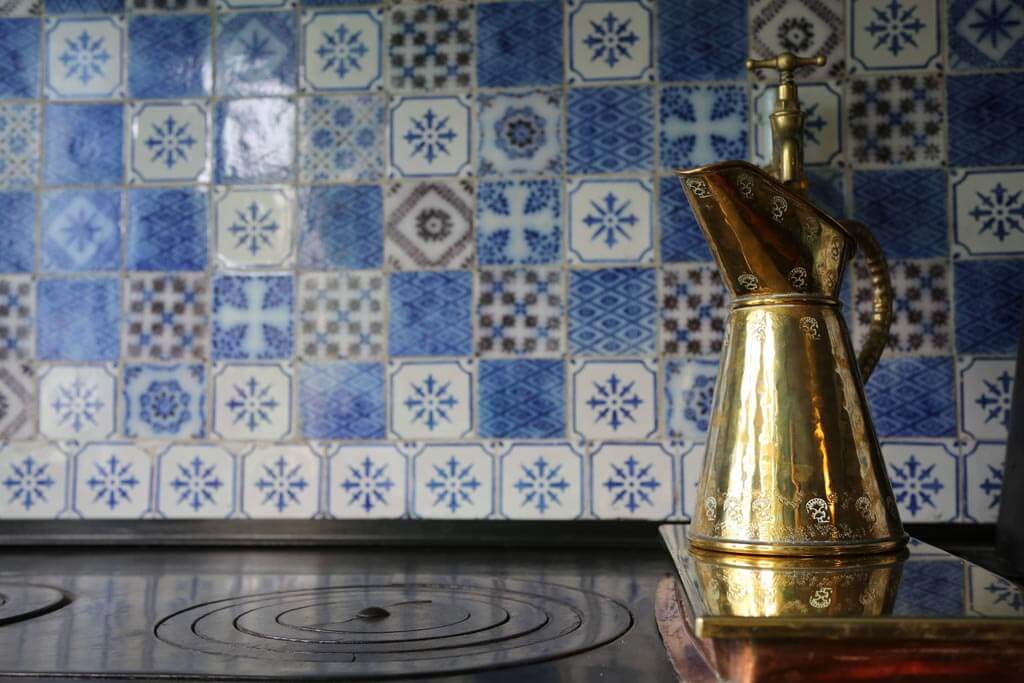
TIP: Don’t miss this private tour of Monet’s House and Gardens with an Art Historian!
2. The Clos Normand
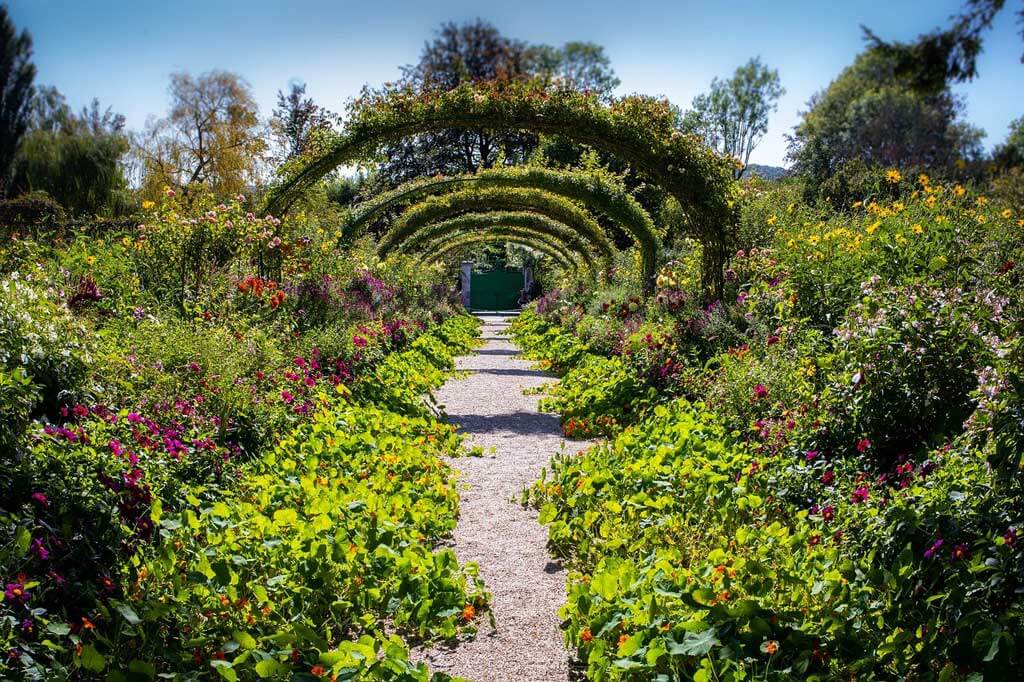
The Monet Garden in Giverny is actually two separate gardens: the Clos Normand and the Water Garden. The Giverny Gardens and House is the town’s top tourist attraction.
The Clos Normand is the house’s former garden, designed by Monet himself. When he moved into the house, the garden was mostly filled with cypress and spruce leaves as well as pretty little flowerbeds. Monet applied himself to redesigning this garden to his own specifications.
The garden now has a central path lined by roses and nasturtiums, and there are numerous cherry and Japanese apricot trees throughout. But it’s the ground itself that’s the real showstopper. In the right season, it becomes a carpet of flowers of all colors and descriptions, a truly spectacular sight.
3. The Water Garden
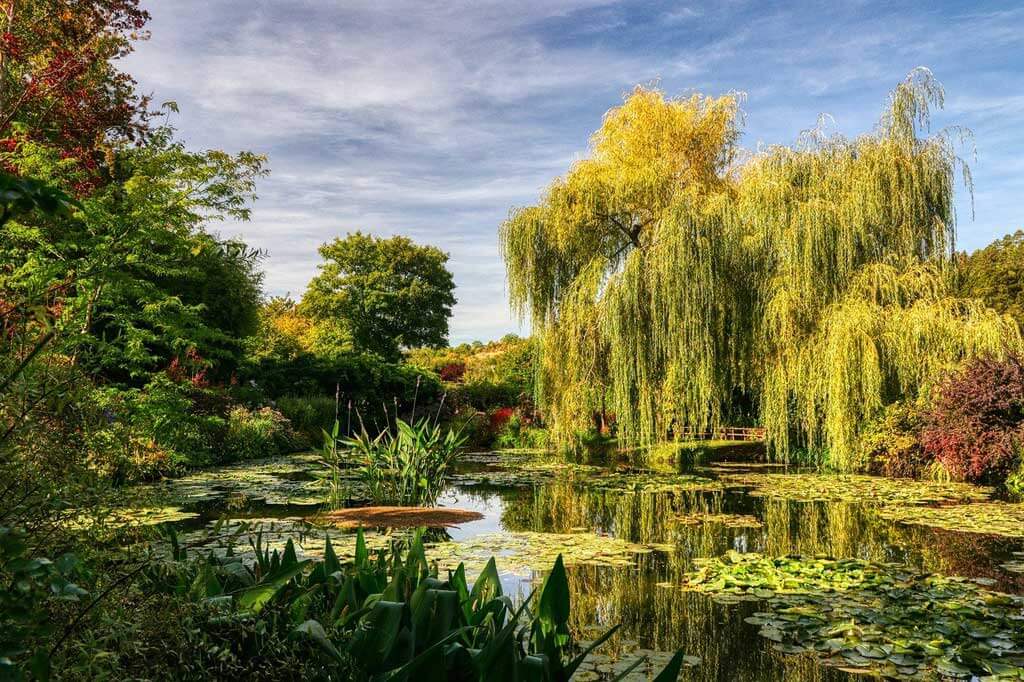
Ten years after he moved to Giverny, Monet bought the land on the opposite side of the road from his house. Despite some opposition from his wife and neighbors, Monet created his famous Japanese-inspired water garden on this plot of land.
In the garden, you’ll find a Japanese bridge covered with wisterias that inspired Monet’s work for more than 20 years. The garden also contains weeping willows, smaller bridges, and water-lilies that Monet immortalized in his work.
Here’s a peek into Monet’s Garden – Clos Normand and Water Garden:
Other Things to Do in Giverny, France
4. Musée des Impressionismes
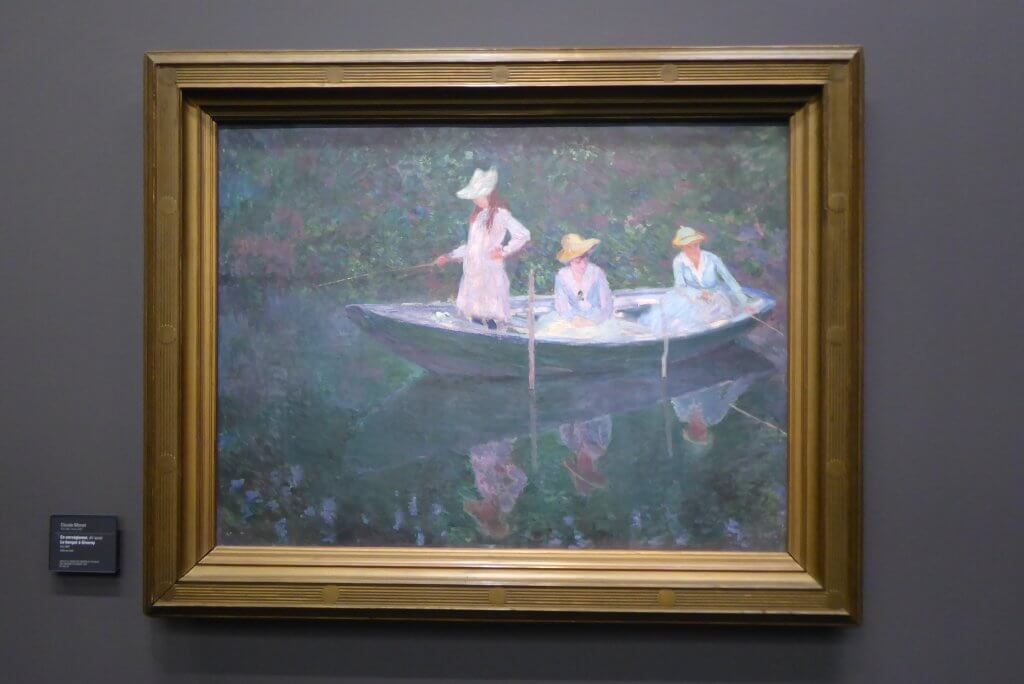
While you’re in Giverny, you might as well learn more about the history of impressionist artists at the Musée des Impressionnismes. The museum was created in 2009, and the architecture of the building is a beautiful match to the Seine Valley’s landscape.
When Monet settled in Giverny, he brought with him other artists and inspired generations of new artists. The exhibitions at the Musée des Impressionnismes explore the influence of Monet on noted artists like Maurice Denis, Sisley, and Reiji Hiramatsu. There are also temporary exhibits on the artistic movement that Monet personified.
5. Church of Sainte Radegonde
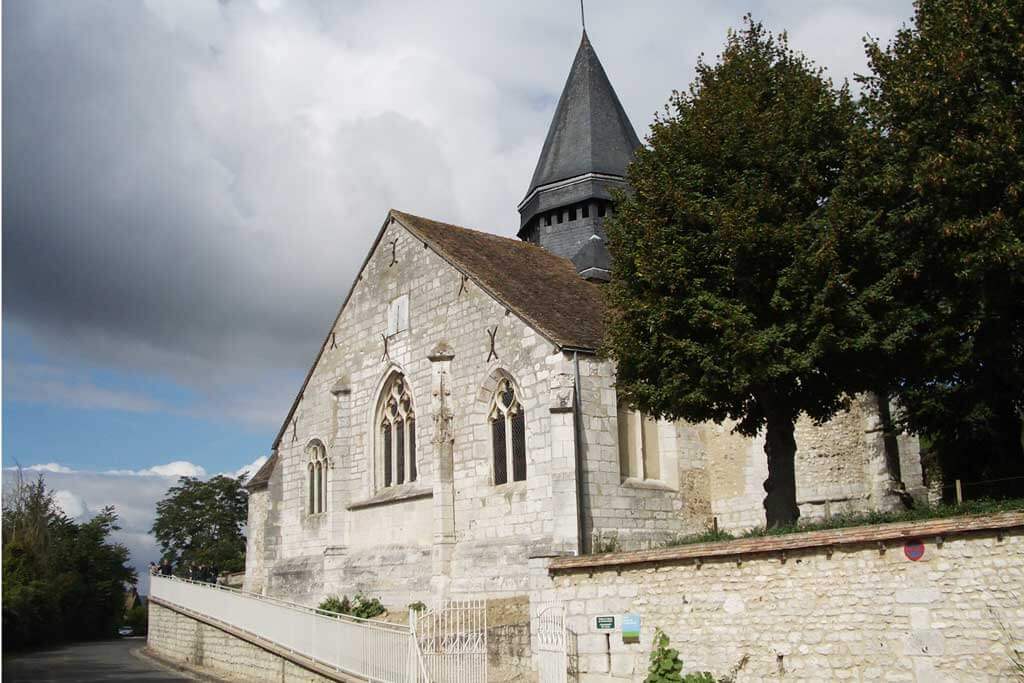
The Church of Sainte Radegonde in Giverny is a Romanesque building and a listed historical monument with lots of original features. The church was built in the 11th century and rebuilt in the 16th century, and it’s filled with beautiful furniture and décor.
There are several religious pieces in the church worth seeing, like the 18th-century John the Baptist statue and the stone statue of St. Quentin’s torture. The church is also surrounded by a cemetery, which is the resting place of Claude Monet and his family.
6. A peek into Moulin des Chennevières (Giverny’s watermill)
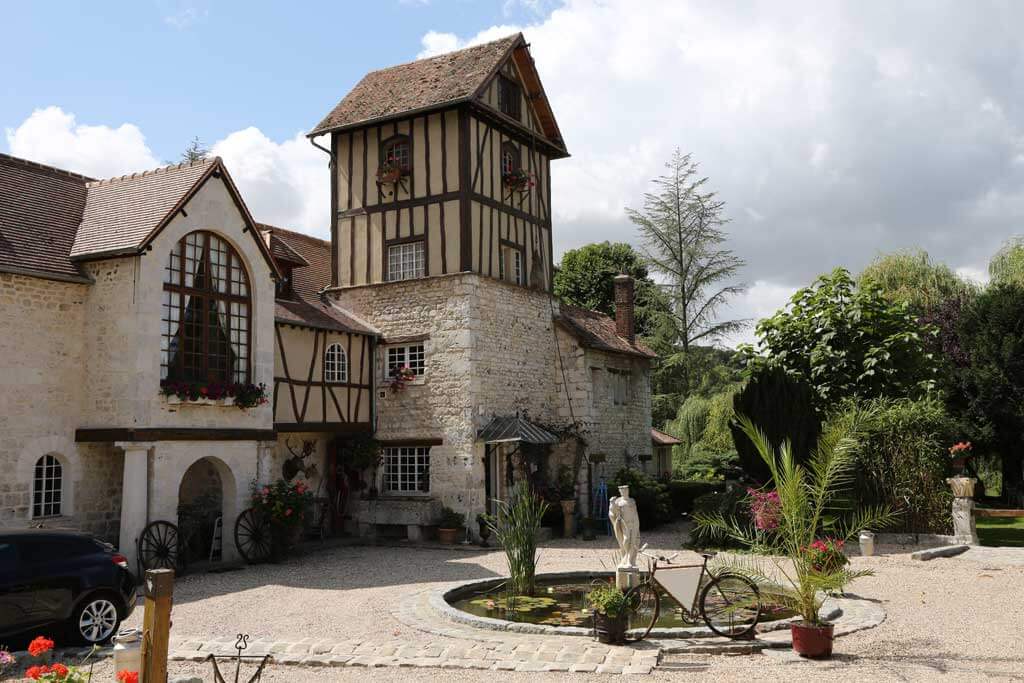
Le Moulin des Chennevières – also known as Giverny’s watermill, is a beautiful, timbered, old mill built in the 17th century and converted today into a Bed &Breakfast.
The house itself is pretty, and it has three guestrooms. It is surrounded by lovely gardens and has a little river that runs through Monet’s ponds before ambling past the mill under the weeping willows.
The grounds of the watermill are also filled with animals, from ostriches to wallabies, and it is a lovely place to see from tMonet’side or spend one night, perhaps on the way to Rouen.
7. Giverny Restaurants
Monet’s fame has made Giverny a popular tourist spot. That’s why you’ll find great shops, attractions, and Giverny restaurants close by that will enhance your visit to the famous gardens. Here’s a list of the best restaurants in Giverny:
>>La Guinguette de Giverny (6 Rue de Falaise). Homemade dishes prepared with local produce in a bucolic atmosphere.
>>Au Coin du Pain’tre (73 Rue Claude Monet). French cuisine.
>>La Capucine (80 Rue Claude Monet). Takeaway food.
>>Restaurant Les Nymphéas Giverny (109 Rue Claude Monet). Norman Cuisine. This is the restaurant of the Monet Foundation, set on a charming old farm. It also has takeaway food (sandwiches, drinks).
>>Ancien Hotel Baudy (81 Rue Claude Monet). Norman cuisine in a building full of history.
